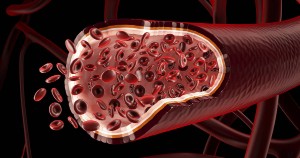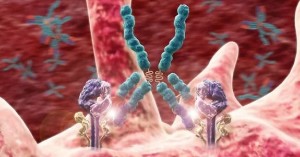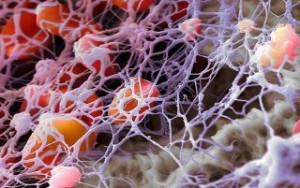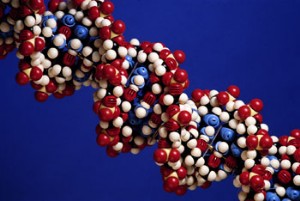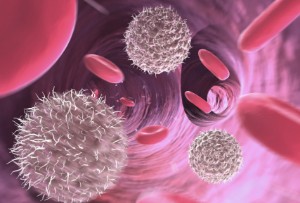Tips on how to lower protein in the blood at elevated levels
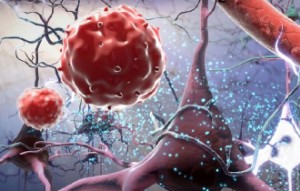 The health of the cardiovascular system means not only the health of the heart and its ability to perform its functions with the participation of arteries, capillaries and other organs of the bloodstream.
The health of the cardiovascular system means not only the health of the heart and its ability to perform its functions with the participation of arteries, capillaries and other organs of the bloodstream.
The health of the cardiovascular system also means the ability of the blood to perform its functions correctly and effectively. To do this, it is necessary that the blood contains all the necessary substances in its composition in the right volumes.
The possibility, safety and correctness of performing blood functions directly depend on the level of various types of proteins in its composition. Their overabundance leads to the inability to perform certain functions in full, which is fraught with negative consequences.
According to research, a person's daily diet significantly affects the concentration of various types of protein in the blood.
In this article, we will look at what actions can be taken at home to reduce total protein in the blood. First of all, we will pay attention to a special diet and lifestyle changes.
Recall that in the last article we reviewed 3 methods of increasing protein in the blood .
Content
Protein functions in blood plasma
The blood contains different types of protein:
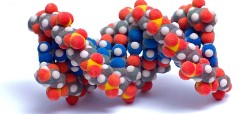
- Albumin - linking function;
- Fibrinogen - participates in blood clotting, clot formation;
- Globulin is a multifunctional protein, one of the purposes of which is also to perform a binding function.
The level of various proteins depends on many factors. On the one hand, factors such as heredity, genetic conditioning, the presence of certain diseases, including chronic ones, have a significant impact on the generation and removal of proteins.
On the other hand, their levels and ratios are influenced by nutrition, lifestyle, ecology, the presence or absence of bad habits, etc.
What is the norm?
The protein norm is explicated in different ways.
By type of protein fraction, the following classification is quoted:
| Protein, total (g/l): | Albumin (g/l): | Fibrinogens (g/l): | Globulin: |
| from 64 to 84; | from 35 to 55; | from 2 to 4; | is explicated if necessary and by fractions. |
There is also a table of protein content values by age:
| Children under one month (g/l): | Children under one year (g/L): | Children under 5 years (g/L): | 5-20 years old (g/l): | Over 20 years old (g/l): |
| from 48 to 73; | from 47 to 72; | from 31 to 75; | from 58 to 76; | from 65 to 85. |
It is worth noting that the values will differ for women during pregnancy, lactation, and menstruation. During these processes, it is extremely necessary to control the levels of the presence of various substances in the blood, because otherwise a situation may arise that is potentially dangerous to the life of the mother, fetus or child.
Why can his level be raised?
There may be several reasons for the increased protein content in the blood.
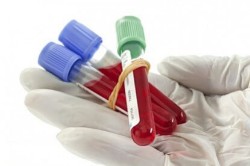 Critically high levels can provoke:
Critically high levels can provoke:
- Autoimmune diseases;
- Chronic inflammatory processes;
- Acute infections;
- Oncology.
Relatively high levels are provoked by:
- Infectious intestinal diseases;
- Food and non-food poisoning;
- Bleeding, surgical procedures;
- Overdose of medications.
It is worth noting that often on the Internet or other unverified sources they write about the benefits protein diet . It is described that the consumption of protein in large quantities and reduced consumption of fatty and carbohydrate foods has a beneficial effect on the body, leads to getting rid of excess weight, etc.
In fact, excess protein in food disrupts the work of many systems, besides, it is not quite rationally consumed by the body and is not fully absorbed. Among other things, it violates total blood composition .
8 products to reduce it
Foods whose consumption contributes to lowering protein in the blood include the following:
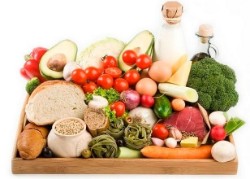
- Vegetables (not root vegetables): tomatoes, beets, carrots, celery, peppers, eggplants, zucchini;
- Legumes and cereals: buckwheat, rice, beans, beans, peas, lentils;
- Fish: the most useful are salmon, sturgeon, whitefish, pelage, nelma, omul, sea bass, cod, haddock;
- Bird (in case of urgent need as a substitute for meat);
- Algae and other marine plants;
- Fruits: seasonal fruits, including apples, plums, peaches, apricots, mangoes, passion fruit, kiwi, cherry plum;
- Berries: raspberries, currants, cherries, gooseberries, mulberries, blueberries, blueberries, blackberries, strawberries;
- Greens and salads: kenza, romaine, parsley, dill, etc.
Other proven methods
In addition to diet, there are other ways to adjust the protein content.
Folk remedies
The following can be used as folk remedies to reduce the concentration of protein in the blood:
- Consumption of cranberry juice (cranberries, cherries, red currants are also suitable);
- Consumption of infusions from birch buds, parsley, corn cob;
- Consumption of decoctions of fir, pumpkin seeds;
- Consumption of bee products.
Medical treatment
The following pharmaceuticals are used as methods of drug exposure:
- Designed to reduce blood pressure;
- Inhibitors in general;
- Immunosuppressants;
- Drugs for correcting sugar levels (for diabetics).
Interesting video
And now we invite you to familiarize yourself with the video:
Conclusion
Thus, the following should be stated:
- The general condition and health of the body largely depend on the performance of the functions of the cardiovascular system;
- In addition Heart and vascular health , the importance of the level and ratio of substances in the blood is great;
- The presence and level of certain substances are influenced by both heredity and anthropogenic factors, including nutrition, lifestyle, presence/absence of bad habits;
- To improve the overall blood picture, it is necessary to organize a diet and include in the diet those foods due to the consumption of which the necessary indicators decrease or increase;
- In addition to saturating the diet with functional foods, you should also exclude harmful foods from it: both objectively harmful (fast food, junk food) and the one whose consumption leads to undesirable dynamics of the level of various substances in the blood;
- It is possible to support treatment, according to the doctor's recommendations, both through the use of methods and means of traditional medicine, and through the use of drug treatment.
It should also be noted that in order to achieve health and maintain the positive dynamics of restoring the health of the cardiovascular and circulatory systems, certain conditions must be met, among which the following are especially significant:
- Giving up bad habits;
- Consumption of limited dosages is possible dry red wine and cognac mainly for medicinal purposes (experts talk about the benefits in general when consuming 175 ml of wine or 35 ml of cognac, as it helps to prevent atherosclerosis of blood vessels, improves the quality of blood circulation, improves blood flow and has a generally beneficial effect on the heart and interconnected systems);
- Sports activities (at the amateur level and under appropriate weather conditions &8212; outdoors);
- Stress relief and constant worries;
- Improving sleep quality;
- Improvement of environmental living conditions.
